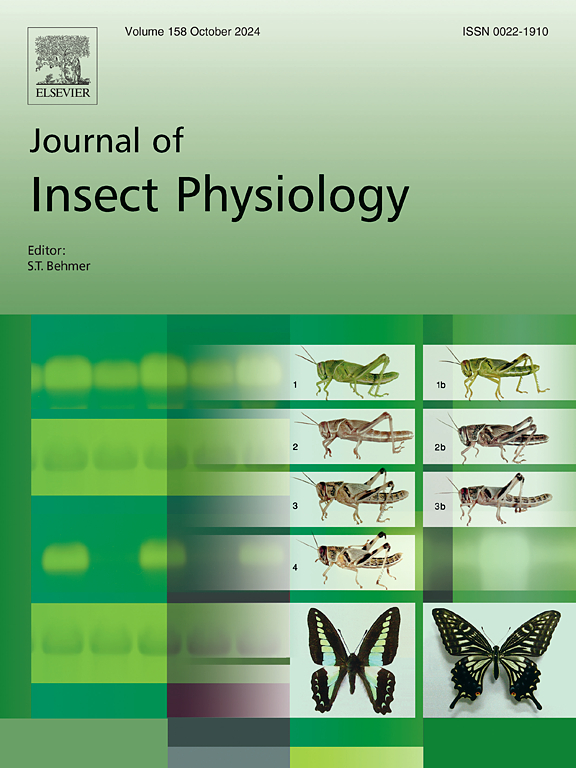蜘蛛的生殖投资:雌性状态和产卵时间如何影响卵囊质量
IF 2.3
2区 农林科学
Q1 ENTOMOLOGY
引用次数: 0
摘要
母性条件和环境因素对生殖投资和后代质量有重要影响。本文研究了布氏全新蛛(Holocnemus pluchei)雌性身体状况和产卵时间(繁殖季前半段和后半段)对卵囊特征和生化组成的影响。我们分析了卵黄发生后雌性及其卵囊的卵囊重量、卵数以及蛋白质、脂质和脂肪酸的特征和浓度。状况良好的雌虫产的卵囊更重,卵也更多,特别是在产卵季节的早期。卵囊和雌性的总蛋白浓度在各组中保持不变,尽管血青素水平的变化与条件或时间没有明确的联系。脂质分析显示,在早期繁殖中,雌性将大约52%的脂质储备分配给卵子。值得注意的是,下半季状态较差的雌性表现出最低的总脂质水平。脂肪酸谱显示出有限的季节性或条件依赖性变化,表明整个季节猎物类型稳定,但在繁殖后期猎物数量减少。我们的研究结果强调了母性条件和产卵时间如何影响毛猴的生殖策略和资源分配,并对后代的生存和种群动态产生潜在影响。本文章由计算机程序翻译,如有差异,请以英文原文为准。

Reproductive investment in spiders: how female condition and oviposition timing influence egg sac quality
Maternal condition and environmental factors can strongly influence reproductive investment and offspring quality. We investigated how female body condition and oviposition timing (first versus second half of the reproductive season) affect egg sac characteristics and biochemical composition in the spider Holocnemus pluchei. We analyzed egg sac weight, egg number, and the characterization and concentration of proteins, lipids, and fatty acids in postvitellogenic females and their egg sacs. Females in good condition produced heavier egg sacs with more eggs, particularly when oviposition occurred early in the season. Total protein concentrations in egg sacs and females remained constant across groups, although hemocyanin levels varied without a clear association with condition or timing. Lipid analysis revealed greater investment in early-season reproduction, with females allocating approximately 52% of their lipid reserves to eggs. Notably, females in poor condition during the second half of the season exhibited the lowest total lipid levels. Fatty acid profiles indicated limited seasonal or condition-dependent changes, suggesting stable prey types throughout the season but reduced prey quantity later in the reproductive period. Our results highlight how both maternal condition and oviposition timing shape reproductive strategies and resource allocation in H. pluchei, with potential consequences for offspring survival and population dynamics.
求助全文
通过发布文献求助,成功后即可免费获取论文全文。
去求助
来源期刊

Journal of insect physiology
生物-昆虫学
CiteScore
4.50
自引率
4.50%
发文量
77
审稿时长
57 days
期刊介绍:
All aspects of insect physiology are published in this journal which will also accept papers on the physiology of other arthropods, if the referees consider the work to be of general interest. The coverage includes endocrinology (in relation to moulting, reproduction and metabolism), pheromones, neurobiology (cellular, integrative and developmental), physiological pharmacology, nutrition (food selection, digestion and absorption), homeostasis, excretion, reproduction and behaviour. Papers covering functional genomics and molecular approaches to physiological problems will also be included. Communications on structure and applied entomology can be published if the subject matter has an explicit bearing on the physiology of arthropods. Review articles and novel method papers are also welcomed.
 求助内容:
求助内容: 应助结果提醒方式:
应助结果提醒方式:


